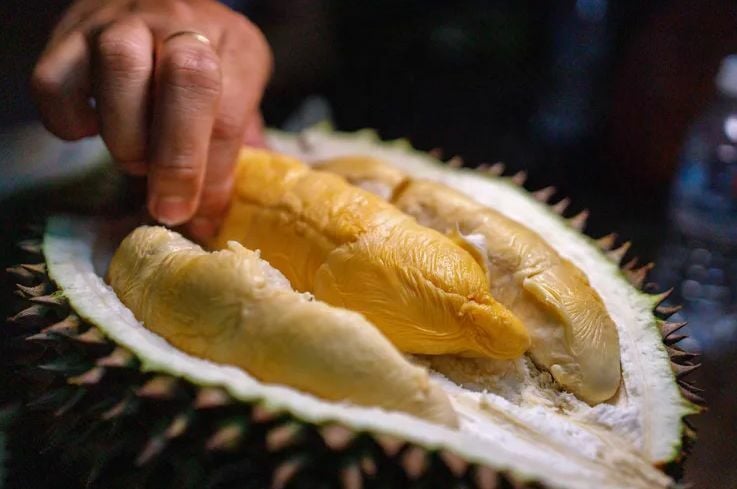King of Fruits creates stink in Swedish Disgusting Food Museum

Durian, often hailed as the King of Fruits sparked a heated debate after being ranked 17th in Sweden’s Disgusting Food Museum. The museum, located in Malmö, showcases some of the world’s most repulsive foods.
Karim Bukhadurov, a travel influencer based in Sweden, captured the attention of millions by posting a video on Instagram featuring the museum. The video has garnered over 6.7 million views, leaving many online users astonished to see foods from their own countries on display.
The inclusion of durian, in particular, ignited significant controversy among Asians who argue that the fruit’s taste does not warrant the label disgusting.
The museum’s website describes durian as the King of Fruits, notorious for its overpowering smell. The description notes that while some find the aroma sweet, others liken it to rotting onions, unwashed socks, or even a dead animal.
The pungent smell has led to durian being banned from public transportation and hotels in various parts of the world.
The Disgusting Food Museum has been operating for several years, transforming from a former slaughterhouse into a unique cultural institution. Its mission extends beyond merely displaying revolting foods. It aims to provoke visitors into questioning their tastes and feelings towards certain dishes.

Cultural conditioning
The museum highlights how perceptions of food are deeply rooted in cultural and social contexts. What one person may find unappetizing could be a delicacy to someone else.
One of the museum’s curators mentioned that feelings of disgust are subjective and depend largely on what individuals are accustomed to from childhood.
“It’s like a cultural conditioning. If we are used to something, we don’t find it disgusting,”
The museum features over 80 exhibits, including Casu Marzu from Sardinia, which is cheese made from sheep’s milk infested with live maggots, and Sweden’s Surströmming a fermented herring known for its foul smell.
In addition to durian, familiar items such as century eggs, worms, and Peruvian frog smoothies are also displayed. Other grotesque foods include smelly tofu, bat soup, and bull penis from China.
Many of these dishes are freshly prepared at the museum, challenging visitors to muster the courage to taste them.
The debate surrounding durian’s inclusion in the museum underscores the broader discussion about cultural differences in food preferences. While the fruit’s strong scent may be off-putting to some, it is cherished and celebrated in many Asian countries.
Critics argue that labelling it as disgusting is not only culturally insensitive but also overlooks the fruit’s rich culinary heritage. This controversy is a testament to how food can evoke strong emotions and opinions, often reflecting deeper cultural values and identities.
The Disgusting Food Museum, through its provocative exhibits, invites visitors to explore these complex relationships with food, challenging them to reconsider what they deem acceptable or repulsive, highlighting the fascinating diversity of global food cultures.
































